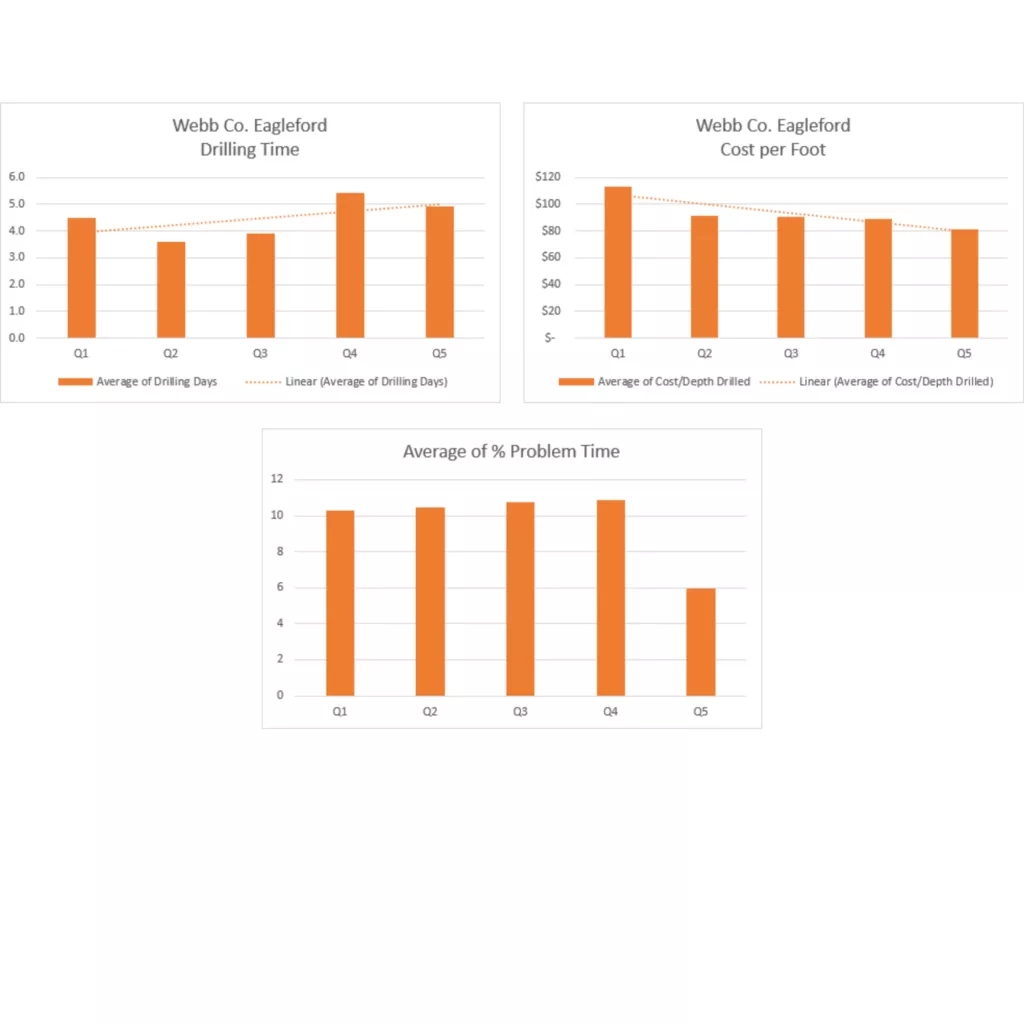THE CHALLENGE & APPROACH:
IPT Well Solutions (IPT) used new procedures and practices to reduce drill costs in the Eagle Ford.
The team applied statistical modeling to evaluate unconventional wells focusing on lost time incidents, rig types, bit selection and drilling fluid practices.
SOLUTION:
IPT leveraged their knowledge of drilling and completing over 6,000 wells in the U.S. and over 400 disposal wells to evaluate how to reduce drilling costs in the Eagle Ford unconventional area.
The team reviewed lessons learned analogs, evaluated bit selections, reviewed drilling fluid types and use of weighted sweeps, and different steerable systems.
RESULTS:
IPT was able to reduce drill costs in Webb County wells applying a better selection of drill bits, eliminating weighted sweeps and using motor steerable (MS) drilling systems.
IPT found that the rotary steerable systems (RSS) failure rate did not warrant the additional costs even with higher penetration rates. Overall risk adjusted cycle time were improved, although at lower penetration rates coupled with lower BHA failure risk. Lessons learned resulted in using two types of BHA’s.
The drill out BHA was designed to drill to KOP as fast as possible and the second was designed to drill the curve and lateral. Motor steerable systems were about a day slower, raw drilling speed, than the RSS, but the MS reliability, lower failure rate eliminating fishing activities, and lower cost resulted in lower well costs with slightly longer individual well cycle times.
Overall, average well times were reduced due to lower lost time incidence. The net result was overall lower well costs per well and per average.

